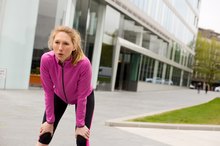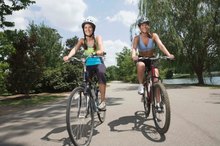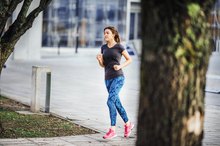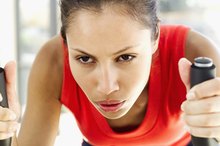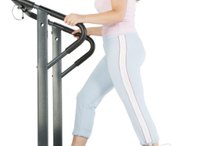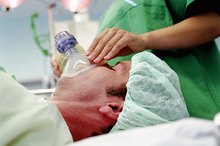Importance of Breathing During Exercise
Proper breathing is essential during exercise. During aerobic activities, such as running or swimming, a good breathing pattern ensures that your working muscles will continue to receive the oxygen they need to keep contracting. According to researchers at the University of New Mexico, proper breathing is also central to nonaerobic forms of exercise, including weightlifting, yoga, tai chi and pilates.
How Breathing Works
When you inhale, air is pulled into microscopic air sacs in the lungs called alveoli, where oxygen is delivered to red blood cells and carbon dioxide is transferred from the blood to the air in the alveoli. The oxygen-rich blood flows to your heart, which then pumps it out to your body. You exhale the carbon dioxide.
Breathing Naturally
What Are the Steps of Breathing?
Learn More
The respiratory center of your brain automatically sends messages to your respiratory muscles, telling them when to breathe. This is automatic; you don't have to think about it. But according to researchers at the University of New Mexico, when you exercise, your brain notes that there is an increase in carbon dioxide and lactic acid—a byproduct of exercising muscles—in your blood and tells your respiratory muscles to increase the speed and depth of your breaths so you can offload all that extra carbon dioxide and deliver additional oxygen to your working muscles.
The Pace of Your Breathing
According to the American Council on Exercise, you can determine your effort level during exercise by how hard you are breathing. For moderate-intensity exercise, such as walking, you should not be breathing so hard that you can't carry on a conversation. For vigorous-intensity exercise, such as jogging, you will be breathing faster but you still should be able to talk in short sentences. Elite athletes who are exercising near their maximum heart rate usually can't say more than a word or two because they are breathing so hard.
- According to the American Council on Exercise, you can determine your effort level during exercise by how hard you are breathing.
- For moderate-intensity exercise, such as walking, you should not be breathing so hard that you can't carry on a conversation.
Meditative Breathing
Breathing Exercises That Increase Metabolism
Learn More
Breathing patterns and techniques are central to the practice of yoga and tai chi. Yoga is not considered an aerobic exercise but, nevertheless, can improve your strength and flexibility. According to University of New Mexico researchers, yoga's pranayama breathing technique improves your immune system and helps with hypertension, asthma and stress. Similarly, tai chi, an ancient Chinese form of martial arts, uses movement, meditation and breathing to improve health. According to the American Cancer Society, tai chi improves posture, balance, muscle mass, flexibility, stamina and strength and provides the same cardiovascular benefits as other moderate exercises such as walking. Deep breathing through the diaphragm contributes to its benefits.
- Breathing patterns and techniques are central to the practice of yoga and tai chi.
- According to University of New Mexico researchers, yoga's pranayama breathing technique improves your immune system and helps with hypertension, asthma and stress.
True Breathing
The idea that the best way to take a deep breath is to expand your chest is a misnomer. University of New Mexico researchers say the best way to get a full, deep breath is to breathe from the diaphragm while expanding the chest at the same time. Allow the inhalation to push out your belly and expand your rib cage as opposed to lifting your shoulders.
Breathing With Exertion
According to the Heart and Vascular Institute at Penn State, proper breathing is also important when doing other types of stretching. Slow and controlled breathing as you enter a stretch can better allow muscles to relax and lengthen. Fitness experts at the University of California-Riverside say the correct breathing technique when lifting weights is to exhale at the point where the exertion and effort is the greatest.
Related Articles
References
- University of California-Riverside: Creating Your Personal Fitness Plan
- The University of New Mexico: The Science of Breathing
- American Council on Exercise: Monitoring Exercise Intensity Using Ratings of Perceived Exertion
- Paulus MP. The breathing conundrum-interoceptive sensitivity and anxiety. Depress Anxiety. 2013;30(4):315–320. doi:10.1002/da.22076
- Cleaveland Clinic. Syncope.
- Cleaveland Clinic. Diaphragmatic breathing; 2018.
- Ma X, Yue ZQ, Gong ZQ, et al. The effect of diaphragmatic breathing on attention, negative affect and stress in healthy adults. Front Psychol. 2017;8:874. doi:10.3389/fpsyg.2017.00874
Writer Bio
Jim Sloan is a writer and editor in Reno, Nevada. He has been a journalist for more than 25 years and is the author of two books, "Staying Fit After Fifty," and "Nevada: True Tales from the Neon Wilderness."


